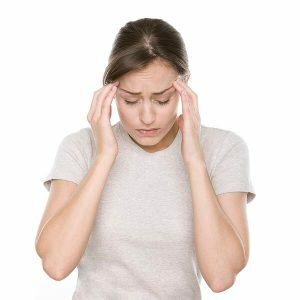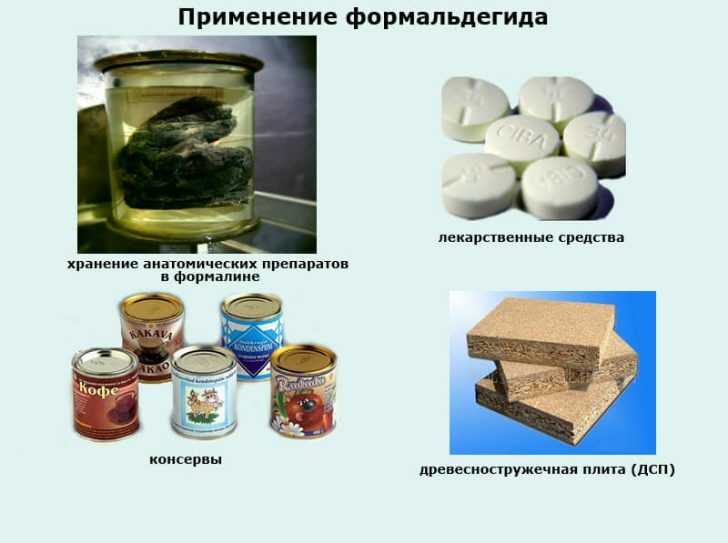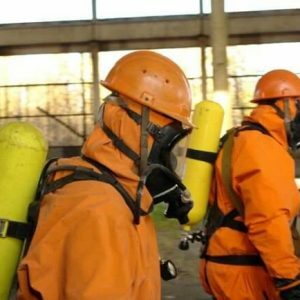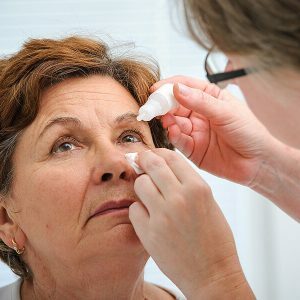Formaldehyde poisoning: symptoms and treatment

Formaldehyde is a colorless gas with a rather sharp odor.This substance is present in many production processes, because of which workers employed in similar industries, risk getting poisoning with formaldehyde.But people can feel the poisonous effect of this substance even in everyday life, because formaldehyde surrounds us everywhere.
Table of contents: Where does formaldehyde come from?Toxic effect of formaldehyde Symptoms of formaldehyde poisoning Urgent help with formaldehyde poisoning How to minimize the effect of formaldehyde?Where does formaldehyde come from?
Formaldehyde is formed as a result of the vital activity of animals, some plants, it is a by-product of forest fires and volcanic gases.So, formaldehyde is constantly in the air in a certain concentration.But human activity can significantly increase this concentration.Formaldehyde is emitted into the air with the exhaust gases of vehicles, as well as as a result of the activities of wood processing enterprises, oil production and transportation, furniture production, leather products, etc.

Aqueous solution of formaldehyde - formalin - is used in the cosmetic, pharmaceutical, paint and varnish industry.Formalin is known for its antiseptic properties and is therefore used in the manufacture of medicines, for example, Teimurov paste.It is also known that clothes called "second-hand" are also treated with formalin-containing products, because of which it acquires a specific smell.In cosmetics, formaldehyde is used as a preservative, which allows you to extend the shelf life of the product.Masters of hairdressing art also expose themselves to formaldehyde, because this component is part of the composition used for keratin hair straightening.
Formaldehyde is also found in wood boards, plywood, parquets and linoleum.And this means that even your own home can be a source of toxic substance.The danger is that the evaporation of formaldehyde from the material and, correspondingly, an increase in its concentration in the air is observed with an increase in temperature.But do not panic, respectable producers of materials necessarily conduct research on their own products for the content of toxic substances, in particular, formaldehyde.This is the case when choosing a parquet or wood-based panels it is better to overpay than to save and not know about the content of hazardous substances in them.

Toxic effect of formaldehyde
According to the sanitary regulations, up to 0.1% of formaldehyde can be used as part of hygienic oral care products and up to 0.2% in other cosmetics. In pharmacy, preparations containing this substance at a concentration of less than 0.5% can be used without restrictions and only medicines containing formaldehyde in concentrations above 5% are not recommended for application on the face.It is forbidden to use formaldehyde in aerosols, sprays.
The effect of formaldehyde was studied in experimental animals.The rabbit's ear was placed in formalin( 37% formaldehyde solution) for half an hour, after which the redness of the skin and its peeling were observed.However, after some time, the integuments were completely restored.
Formaldehyde is often used in cosmetics that do not require prolonged exposure to the skin.Basically, the substance is added at a concentration of less than 0.1% as a preservative in shampoos, bath foam.The results of the study, which used a shampoo with a 0.1% concentration of formaldehyde, suggest that an unfavorable skin reaction occurred in one person from 75,000 people.However, it is not known which component of the shampoo could provoke such a reaction.
We recommend to read: 
In summary, it can be said that formaldehyde poisoning when using cosmetic products containing this preservative is unlikely, because its concentration is negligible and can not cause the development of a pathological condition.
However, formaldehyde is still not so harmless.This substance has probably a carcinogenic effect on a person.In this case, its carcinogenicity for animals is reliably proven.There is evidence of a link between formaldehyde used as an antiseptic and a preservative, with an increased risk of nasopharyngeal cancer.
Symptoms of poisoning
Formaldehyde is a toxic substance that irritates the respiratory tract, skin, eyes, and the central nervous system.A lethal dose of formalin( 40% formaldehyde solution) is only 10-50 grams.The lethal dose of pure formaldehyde is 10-90 ml.Lethal for laboratory rats is the content of formaldehyde in air - 578 mg / m³ for four hours.
People who work in production, who use or produce formaldehyde, are most susceptible to poisoning.The maximum permissible concentration( MPC) of formaldehyde in the air of the working area is 0.5 mg / m³.
Symptoms of chronic formaldehyde poisoning are:
- Weakness;
- Rapid fatigue;
- Weight loss;
- Depressed mood / euphoria;
- Insomnia;
- Difficulty breathing;
- Bronchial asthma attacks;
- Headaches;
- Nocturnal cramps;
- Pale skin.
 Acute inhalation poisoning with formaldehyde is indicated by difficulty in breathing, coughing, possibly developing pulmonary edema.As the inhalation of toxic fumes affects the central nervous system: there is dizziness, anxiety, a sense of fear, discoordination, convulsions.
Acute inhalation poisoning with formaldehyde is indicated by difficulty in breathing, coughing, possibly developing pulmonary edema.As the inhalation of toxic fumes affects the central nervous system: there is dizziness, anxiety, a sense of fear, discoordination, convulsions.
When poisoning with formaldehyde through the victim's mouth is concerned about pain, burning in the throat, along the esophagus, in the stomach, diarrhea, bloody vomiting.Possible also such formidable complications as laryngeal edema, respiratory arrest, hemorrhagic nephritis, anuria.
Workers in contact with formalin and its vapors, for the first time, observe dermatitis of hands, face, brittle nails.Possible the development of allergic dermatitis and eczema.Gradually the sensitivity to formalin increases.
Emergency care
In case of acute poisoning with vapors of human formaldehyde it is necessary to take out on the street and allow to inhale with water and add a drop of liquid ammonia - this substance eliminates the excess formalin by the formation of urotropine.With edema of the larynx, intubation of the trachea or tracheostomy is performed.
 If formaldehyde and its derivatives get into your eyes, you should rinse them thoroughly with water, then drip a couple drops of 0.5% novocaine solution with the addition of eight to ten drops of adrenaline( 1: 1000) per 10 ml of solution.
If formaldehyde and its derivatives get into your eyes, you should rinse them thoroughly with water, then drip a couple drops of 0.5% novocaine solution with the addition of eight to ten drops of adrenaline( 1: 1000) per 10 ml of solution.
If the poisoning is caused by ingestion of formalin through the mouth, atropine( 1 ml 0.1% solution subcutaneously), promedol( 1 ml 2% solution subcutaneously) and aminazine( 1 ml 2.5% solution intramuscularly) are administered to the injured person.You should wash your stomach with 2-3% solution of ammonium carbonate, acetate or chloride through the probe( these substances bind formaldehyde in the form of urotropine).The victim is recommended a plentiful drink, as well as 2% solution of ammonium salts with 10-20% urea, ammonia-anise drops inside.To prevent hepatic renal failure, a glucose-novocaine mixture is administered.
 If formaldehyde hits the skin, immediately wash the affected area thoroughly with water and then with 5% solution of ammonia.
If formaldehyde hits the skin, immediately wash the affected area thoroughly with water and then with 5% solution of ammonia.
Depending on the clinical picture of poisoning, the patient may be shown inhalation of oxygen, cardiac drugs in violation of cardiovascular activity, respiratory stimulants( cytiton, lobelin) with breathing disorders, sedatives with mental agitation.
How to minimize the effect of formaldehyde?
Formaldehyde surrounds us everywhere and at work, both on the street and at home.Completely eliminate it is impossible, but to reduce the concentration is real.What do you need to do for this?
- Remember that the release of formaldehyde from potentially hazardous items increases with increasing temperature and humidity.Therefore, it is important to ensure that the parameters of the microclimate at home remain optimal.
- It is necessary to ventilate the room on a regular basis.
- Carry wet cleaning in the room, wiping the furniture.
- Start plants: fern, hamedoroy, dracena, ivy, ficus of Benjamin.These plants are able to absorb toxic substances from the air.
Grigorova Valeria, medical reviewer



